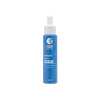What's inside
What's inside
 Key Ingredients
Key Ingredients

 Benefits
Benefits

 Concerns
Concerns

 Ingredients Side-by-side
Ingredients Side-by-side

Water
Skin ConditioningGlycerin
HumectantPropanediol
SolventCetearyl Olivate
Squalane
EmollientCaprylic/Capric Triglyceride
MaskingButyrospermum Parkii Butter
Skin ConditioningHelianthus Annuus Seed Oil
EmollientNiacinamide
SmoothingHydroxyacetophenone
Antioxidant1,2-Hexanediol
Skin ConditioningSorbitan Olivate
EmulsifyingSodium Acrylate/Sodium Acryloyldimethyl Taurate Copolymer
Emulsion StabilisingParfum
MaskingIsohexadecane
EmollientHydrogenated Lecithin
EmulsifyingAcrylates/C10-30 Alkyl Acrylate Crosspolymer
Emulsion StabilisingArginine
MaskingAllantoin
Skin ConditioningRetinyl Palmitate
Skin ConditioningBisabolol
MaskingCalanthe Discolor Extract
Skin ConditioningSodium Benzoate
MaskingPolysorbate 80
EmulsifyingXanthan Gum
EmulsifyingDiethylhexyl Syringylidenemalonate
Skin ProtectingDisodium EDTA
Potassium Sorbate
PreservativeSorbitan Oleate
EmulsifyingSodium Hyaluronate
HumectantTocopherol
AntioxidantGluconolactone
Skin ConditioningRetinol
Skin ConditioningZingiber Officinale Root Extract
MaskingCalcium Gluconate
HumectantCoumarin
PerfumingCI 19140
Cosmetic ColorantWater, Glycerin, Propanediol, Cetearyl Olivate, Squalane, Caprylic/Capric Triglyceride, Butyrospermum Parkii Butter, Helianthus Annuus Seed Oil, Niacinamide, Hydroxyacetophenone, 1,2-Hexanediol, Sorbitan Olivate, Sodium Acrylate/Sodium Acryloyldimethyl Taurate Copolymer, Parfum, Isohexadecane, Hydrogenated Lecithin, Acrylates/C10-30 Alkyl Acrylate Crosspolymer, Arginine, Allantoin, Retinyl Palmitate, Bisabolol, Calanthe Discolor Extract, Sodium Benzoate, Polysorbate 80, Xanthan Gum, Diethylhexyl Syringylidenemalonate, Disodium EDTA, Potassium Sorbate, Sorbitan Oleate, Sodium Hyaluronate, Tocopherol, Gluconolactone, Retinol, Zingiber Officinale Root Extract, Calcium Gluconate, Coumarin, CI 19140
 Reviews
Reviews

Ingredients Explained
These ingredients are found in both products.
Ingredients higher up in an ingredient list are typically present in a larger amount.
Niacinamide is a multitasking form of vitamin B3 that strengthens the skin barrier, reduces pores and dark spots, regulates oil, and improves signs of aging.
And the best part? It's gentle and well-tolerated by most skin types, including sensitive and reactive skin.
You might have heard of "niacin flush", or the reddening of skin that causes itchiness. Niacinamide has not been found to cause this.
In very rare cases, some individuals may not be able to tolerate niacinamide at all or experience an allergic reaction to it.
If you are experiencing flaking, irritation, and dryness with this ingredient, be sure to double check all your products as this ingredient can be found in all categories of skincare.
When incorporating niacinamide into your routine, look out for concentration amounts. Typically, 5% niacinamide provides benefits such as fading dark spots. However, if you have sensitive skin, it is better to begin with a smaller concentration.
When you apply niacinamide to your skin, your body converts it into nicotinamide adenine dinucleotide (NAD). NAD is an essential coenzyme that is already found in your cells as "fuel" and powers countless biological processes.
In your skin, NAD helps repair cell damage, produce new healthy cells, support collagen production, strengthen the skin barrier, and fight environmental stressors (like UV and pollution).
Our natural NAD levels start to decline with age, leading to slower skin repair, visible aging, and a weaker skin barrier. By providing your skin niacinamide, you're recharging your skin's NAD levels. This leads to stronger, healthier, and younger looking skin.
Another name for vitamin B3 is nicotinamide. This vitamin is water-soluble and our bodies don't store it. We obtain Vitamin B3 from either food or skincare. Meat, fish, wheat, yeast, and leafy greens contain vitamin B3.
The type of niacinamide used in skincare is synthetically created.
Learn more about NiacinamideWater. It's the most common cosmetic ingredient of all. You'll usually see it at the top of ingredient lists, meaning that it makes up the largest part of the product.
So why is it so popular? Water most often acts as a solvent - this means that it helps dissolve other ingredients into the formulation.
You'll also recognize water as that liquid we all need to stay alive. If you see this, drink a glass of water. Stay hydrated!
Learn more about WaterXanthan gum is used as a stabilizer and thickener within cosmetic products. It helps give products a sticky, thick feeling - preventing them from being too runny.
On the technical side of things, xanthan gum is a polysaccharide - a combination consisting of multiple sugar molecules bonded together.
Xanthan gum is a pretty common and great ingredient. It is a natural, non-toxic, non-irritating ingredient that is also commonly used in food products.
Learn more about Xanthan Gum